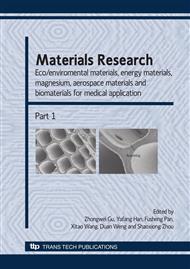p.1255
p.1259
p.1263
p.1268
p.1273
p.1278
p.1284
p.1290
p.1294
Surface Modification of Fluorosilicone Acrylate RGP Contact Lens by Low-Temperature Ammonia Plasma
Abstract:
In order to improve the surface hydrophilicity and the resistance to protein deposition of fluorosilicone acrylate RGP (rigid gas permeable) contact lens, low temperature ammonia plasma treatment was used to modify the lens surface. The changes of surface structures and properties were characterized by contact angle analyzer, X-ray photoelectron spectroscopy (XPS) and atomic force microscope (AFM). Effects of exposure time and plasma generating power on surface properties of the RGP contact lens were investigated. The surface contact angle measurements showed a great improvement of hydrophilicity after plasma treatment. XPS analysis indicated that the oxygen content and the nitrogen content increased remarkably after ammonia plasma treatment. Furthermore, the content of the hydrophilic group O-C=O/N-C=O on the surface increased and the content of the hydrophobic group CF2 decreased after plasma treatment. AFM results showed that ammonia plasma could lead to surface etching.
Info:
Periodical:
Pages:
1273-1277
Citation:
Online since:
January 2009
Authors:
Price:
Сopyright:
© 2009 Trans Tech Publications Ltd. All Rights Reserved
Share:
Citation:


